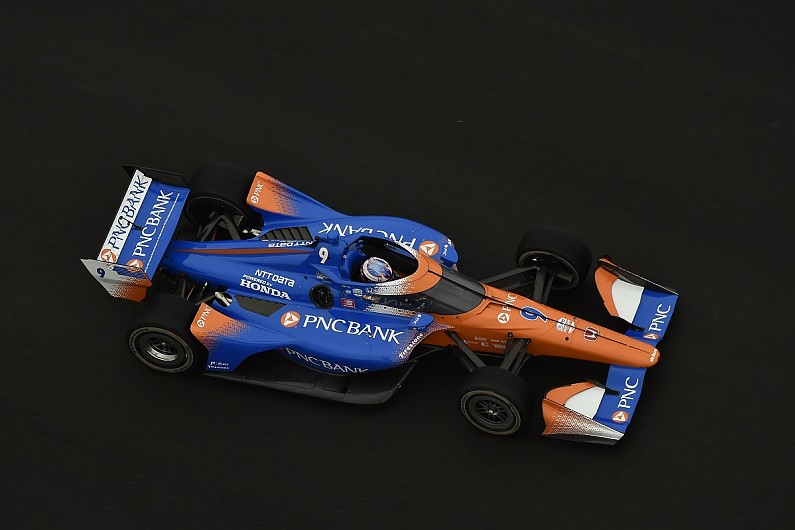Scott Dixon says he wishes the IndyCar Series hadn’t been so radical with the regulation of tyre usage ahead of this weekend’s 2020 opener at Texas Motor Speedway.
IndyCar officials have introduced a 35-lap limit for tyres this Saturday’s Genesys 300, to mitigate the fact that Firestone will be bringing the same compound and construction tyres as last year, despite the aeroscreen altering an IndyCar’s centre of gravity and weight and therefore increasing front-right tyre wear.
IndyCar’s decision, forced by the COVID-19 pandemic halting production of its new tyres, is a cautious move at a track where the field laps at 215mph, while there has been a lack of data due to no testing over the past three months.
February’s rookie test is also thought to be unrepresentative due to cooler conditions whereas this weekend could see more hotter temperatures, while Texas Motor Speedway has occasionally seen tyre problems too, most recently blistering in 2018 but complaints from drivers were muted when top three finishers Dixon, Simon Pagenaud and Alexander Rossi reported no problems.
Five-time champion Dixon, however, believes IndyCar has erred too far on the side of caution when previous stint lengths were typically 60-65 laps.
“Shortening the stint by half, I think kind of eliminates the whole tire degradation thing,” Dixon said. “I wish there was more of a range they’d come up with as opposed to chopping it right in the middle.
“It’s definitely going to be interesting to see how that plays out. It’ll put a lot of emphasis on pit stops, in-laps. Could create other issues. Re-fuelling is going to be short. A lot of pressure on the pit crew guys.”
The Chip Ganassi Racing driver, who has won at TMS on three occasions in 2008, ’15 and ’18, said there may be additional hazards as a consequence of the shortened stint length.
“[With] the tyre grip, the possibility of it becoming a pack race again could be interesting, too, which you hope doesn’t happen,” he said. “Plus the emphasis of having good in-laps because it’s going to carry over so much of your pit stop time, the time you’re on pit road, you don’t want people overextending themselves on pit entry and sliding back up onto the track, which we have had in previous years.
“But you hope that it’s not going to be something that occurs. I think the professionalism of all these teams and drivers now is very good.”
With the event squeezed into one day – 80 minutes of practice, then qualifying, followed by a shortened 200-lap race – Dixon is hopeful Ganassi’s expansion to three cars will help, as the team welcomes ex-Formula 1 driver Marcus Ericsson in to the fold.
“An hour and 20 minutes, you’ve got the possibility of trying to do gear changes, [but] once you go into qualifying, then you go into impound, you can’t change anything for the race. You got to cover a lot of bases in such a short amount of time,” he said.
“You’ve just got to go in with a positive mindset. Yes, I think a team like ours that has a lot of resources, running in different configurations, might have a slight advantage. But honestly, the competition now in the series is through the roof. It’s going to be tough in any format.”

That said, Dixon admitted he liked the idea of one-day events and more double-header events, which so far have been confirmed for Road America, Iowa Speedway and Laguna Seca in 2020.
“I’m in favour of these short events,” he said. “I love the fact that we’re throwing in a ton of doubleheaders, as well. I’ve always been a big fan of the double-headers. If you are going to be there, you should be racing. What better way than to have two full-distance races?”
